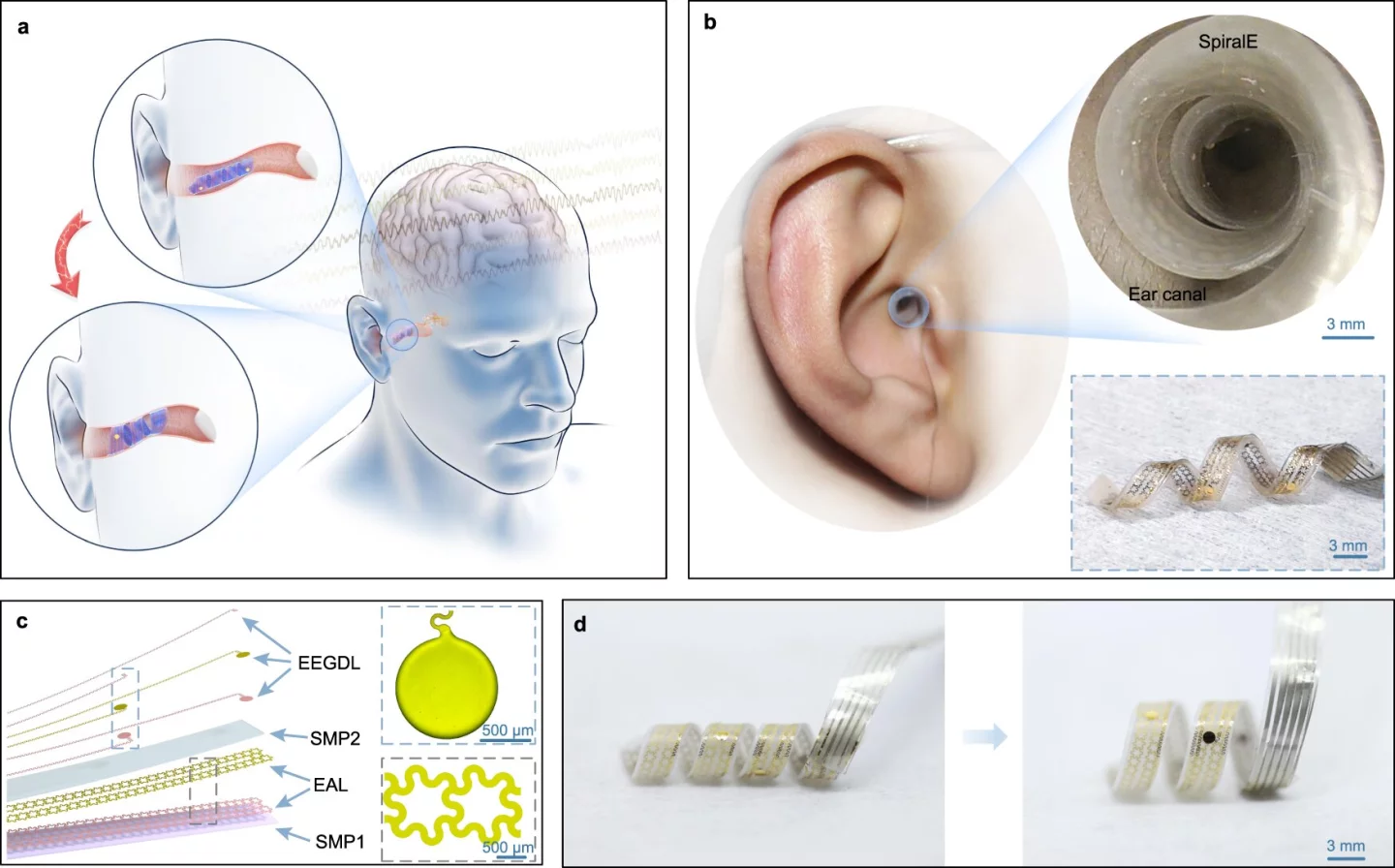Serving multiple useful purposes, brain-computer interfaces (BCIs) usually incorporate scalp-applied or even brain-implanted electrodes. A new less-invasive BCI, however, can simply be stuck in the patient's ear canal as needed.
Developed by a team of scientists from China's Tsinghua University, the experimental device is known as the SpiralE.
Measuring just 50 mm long by 3 mm wide, it takes the form of a thin multilayered rectangular strip made up of two shape-memory polymer layers, one electrothermal actuation layer, and one EEG (electroencephalogram) layer. The strip is initially tightly curled like a corkscrew, allowing it to be easily inserted into the patient's wider ear canal.
Once the device is in place, it's exposed to an external electrical field, triggering a Joule heating process in its electrothermal actuation layer. The heat which is generated causes the strip's shape-memory polymers to try reverting to a flat, non-curled state.
As a result, the strip starts to uncurl, but it stays held in a less-tightly-curled configuration by the inner walls of the ear canal. Its EEG electrode layer is thus pressed up against the ear-canal skin, where it can easily detect the brain's electrical signals.

Importantly, because the SpiralE expands to the constraints of each person's uniquely shaped ear canal, it always provides a custom fit. And as an added bonus, because it's essentially a hollow spiral that doesn't block sound waves, it reportedly won't affect the patient's hearing. Removing it is simply a matter of gently pulling/twisting it out.
In lab tests, the device was found to be comfortable to wear for prolonged periods, and it proved to be up to 95% accurate at detecting volunteers' brain activity. The scientists hope that it may ultimately find use in applications such as detecting epilepsy or drowsiness, or monitoring patients' sleep patterns.
A paper on the research, which was led by Zhouheng Wang, was recently published in the journal Nature Communications.
Source: MedicalXpress





